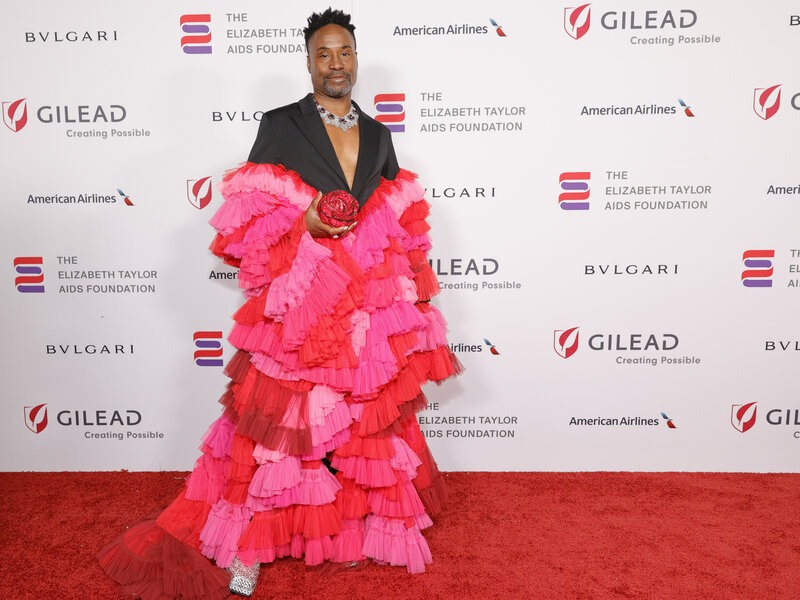Allies and advocacy: Who is responsible for ‘changing the game?’
“I. Personally. Changed. The. Whole. Game,” claimed Billy Porter in an article for The Sunday Times. Alluding to his affinity for dressing in a gender non-conforming manner, Porter suggests that he is the reason a growing number of men and boys are expressing themselves through traditionally feminine clothes. He then references the December 2020 cover of Vogue, which featured Harry Styles, as its first-ever male cover star, wearing a dress. He critiques Styles for wearing a dress simply “because it’s the thing to do”, explaining that for him, dressing like this is “politics.”
It’s clear why, in the face of such adversity, it is gut-wrenching to see a man who ‘doesn’t think about it’ taking centre stage in a discussion you care so deeply about.
The interview has received a great deal of backlash, with many pointing out that Billy Porter is nothing short of ludicrous in his argument. Porter performed on Broadway throughout the 2000s, but became a household name around 2018, when he was cast in the Ryan Murphy show, Pose. He also made waves in 2019 when he appeared at the Oscars in a Christian-Siriano tuxedo dress. This was an influential moment, but certainly not an unprecedented one. Porter’s claim that he “‘was the first doing it” is unequivocally false. Tacking on ‘androgynous’ to the names of stars such as Freddy Mercury, Prince, David Bowie, or Elvis in a quick google search is proof enough that performers have been experimenting with gendered clothing long before Porter came onto the scene. Harry Styles himself, in the interview which accompanied his cover, even cited these men as influences in his music and persona. “Freddy Mercury and Elton John – they’re such showmen,” Styles explains, “now I’ll put on something flamboyant, and I don’t feel crazy wearing it.”
While Porter’s words are hyperbolic, the sentiment he expresses about the ease at which Styles can adopt this feminine style is a valid one. In his interview with Vogue, Harry makes statements such as “I don’t take it too seriously,” and “I’ve never really thought too much about what it means.” Conversely, Porter grew up as a victim of sexual abuse and was coming of age during the AIDS/HIV crisis. For him, sexuality and gender expression were tied up with trauma – and this is something he has spoken openly about. It’s clear why, in the face of such adversity, it is gut-wrenching to see a man who ‘doesn’t think about it’ taking centre stage in a discussion you care so deeply about.
Porter’s envy bears no weight on the social and cultural value of that moment.
But there’s an apathy that comes with progress – which is no bad thing. When expression becomes so free that it ceases to be political, is that not the marker of success? Progress is meant to make things easier for future generations, yet there’s an inevitable amount of jealousy that comes with this as older people watch the young do things they never got the opportunity to. In private and personal conversations this jealousy can be understood, even empathised with, but in public and political discourse, one must be more self-aware, and apply more critical analysis than that. Porter’s envy bears no weight on the social and cultural value of that moment.
It is also important to consider that both men discussed here are cis, and as such the sociopolitical ‘goal’ they strive for is notably different, than if this were a discussion about trans, non-binary, or otherwise gender non-conforming individuals. The Harry Styles Vogue cover is testament only to the fact that men can wear dresses – and still be masculine.
It merely strives to change the bounds in which a masculine identity can be presented, not to completely eradicate gendered boundaries.
If one wishes to derive a political message from the shoot, it is that men can wear dresses. The cultural consequences of this in practice might be that more straight and/or cis men experiment with feminine clothing, while retaining their masculine identity. It merely strives to change the bounds in which a masculine identity can be presented, not to completely eradicate gendered boundaries.
Several brilliant historical and contemporary figures have striven to change these gender boundaries: Marsha P Johnson, Munroe Bergdorf, and Mary Jones, to name a few, but their plight is a much greater one. In wearing a dress, Harry Styles does not insert himself as a figurehead for their movement, but rather as an ally, with the significantly smaller goal of widening the stylistic horizons of cis men.

Comments